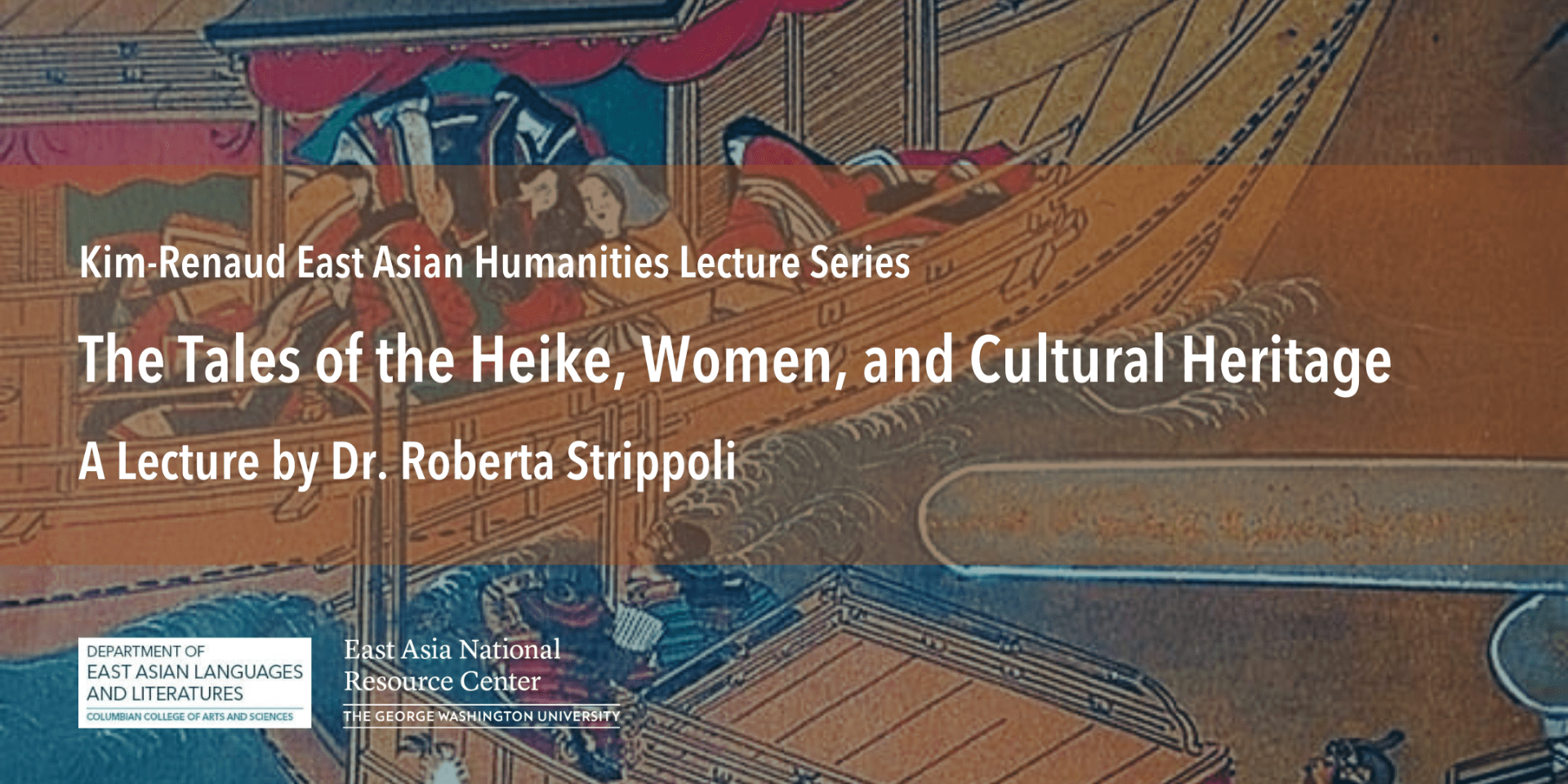GW Department of East Asian Languages and Literatures
Kim-Renaud East Asian Humanities Lecture Series
Friday, April 22, 2022 | 3:30 pm – 4:30 pm EDT
Virtual Event via Zoom
Join us for a talk with Dr. Roberta Strippoli (University of Naples L’Orientale) on the The Tales of the Heike
About
This talk will explore several stories featuring women that appeared for the first time in the The Tales of the Heike, a 14th century Japanese narrative about the war between two military clans, the Heike and the Genji, which took place two centuries earlier.
The Tales of the Heike features dozens of female characters. This may seem surprising, considering that the main plot is primarily a matter of enmities between men. With a few exceptions, these women do not take part in battles, and are for the most part only obliquely involved in the main plot of the tale. Yet their stories are numerous, compelling, and found throughout the text. It is a woman called Tokiko who commits suicide with her grandchild, the emperor Antoku, during the final battle, and it is another woman, Kenreimon’in, the last surviving member of the Taira family, who is left at the end to pray for the dead, to make sense of what happened, and, by recounting the events, to make sure that they will not be forgotten by future generations.
Cultural forms such as literary texts, theatrical plays, and illustrated scrolls grew from these stories centuries after the itinerant performers who chanted The Tales of the Heike had spread it all over Japan. Importantly, local legends also developed, and monuments, landmarks, and heritage sites connected to them can now be found all around Japan. For example, the dancer Giō, who probably never existed, has four graves in disparate regions. The talk will look at some examples of this cultural heritage, detailing their stemming from Heike stories and their development and transformation into local legends and monuments.
Registration
The event is open to the public.
Speaker
Dr. Roberta Strippoli, University of Naples L’Orientale
Speaker
Roberta Strippoli has worked extensively on medieval Japanese narrative, in particular otogizōshi, stories that circulated between the fifteenth and seventeenth centuries as manuscript scrolls and printed booklets, often illustrated. These stories feature human characters from all walks of life as well as animals, deities, demons, and monsters of various kinds. She has published a collection of otogizōshi in Italian translation titled La monaca tuttofare, la donna serpente, il demone beone. Racconti dal medioevo giapponese [The Errand Nun, the Snake Woman, the Drunken Demon: Tales from Medieval Japan] (Venice: Marsilio, 2001) and a study on the tale of Benkei (Yoshitsune’s trusted companion) in Monumenta Nipponica 70:2, 2015. Her second book, Dancer, Nun, Ghost, Goddess (Leiden: Brill, 2017) is a monograph that explores the reception of the Giō-Hotoke episode from the fourteenth-century military narrative Heike monogatari over six centuries and across literary, visual, and performance genres.





